49 Years a Trapper: Childhood Hobby Became a Man’s Lifelong Passion
By Austin Price
Photography By Austin Price
Reporting Texas
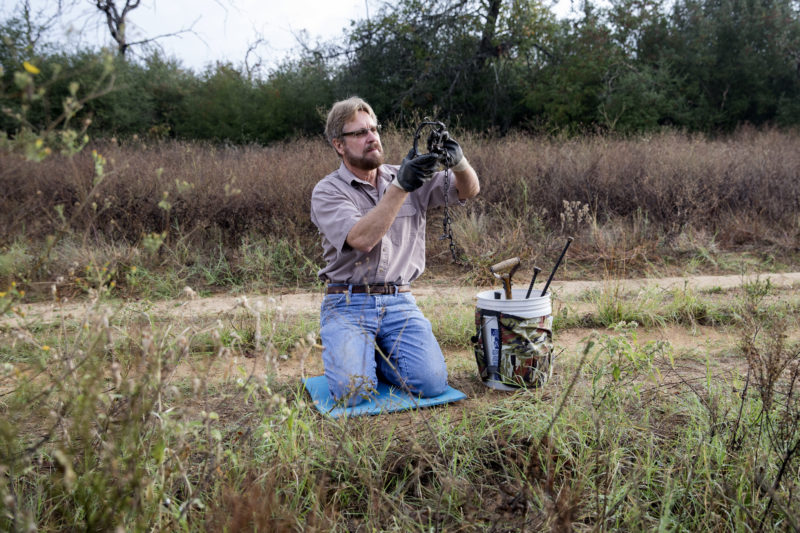
Dan Hepker, 61, sets a coyote trap on a ranch on the edge of Bastrop. His fascination with trapping is his passion, but not his main source of income.
BASTROP — Dan Hepker drives deep into a tangle of yaupon and six-year-old pine saplings on a 900-acre ranch on the edge of town. Metal stakes and traps rattle in a box in the truck bed, alongside a trowel, mallet and a collection of glass vials containing odorous lures made from the glands of coyotes, bobcats, foxes and other fur-bearers, and a .22-caliber revolver.
Hepker stops the truck at a fork in the road and gets out to look for tracks.
“There’s something here.” He points out indentations in a gopher mound left by oval footpads and toenails. “That’s a canine.”
Hepker is out to catch a coyote. He studies the area, thinking aloud in a deep, rolling voice. “This area right here, I think this’ll be a good place to put some sets in.”
As long as man has harnessed nature, he has had to protect crops and livestock from unwanted predation and disease. “When there’s humans and wildlife living in the same neck of the woods, there’s always gonna be some problem,” a longtime trapper named Don Hawthorne said in an oral history the U.S. Department of Agriculture Wildlife Services recorded in 2006. “I still think the trap probably has its place.”
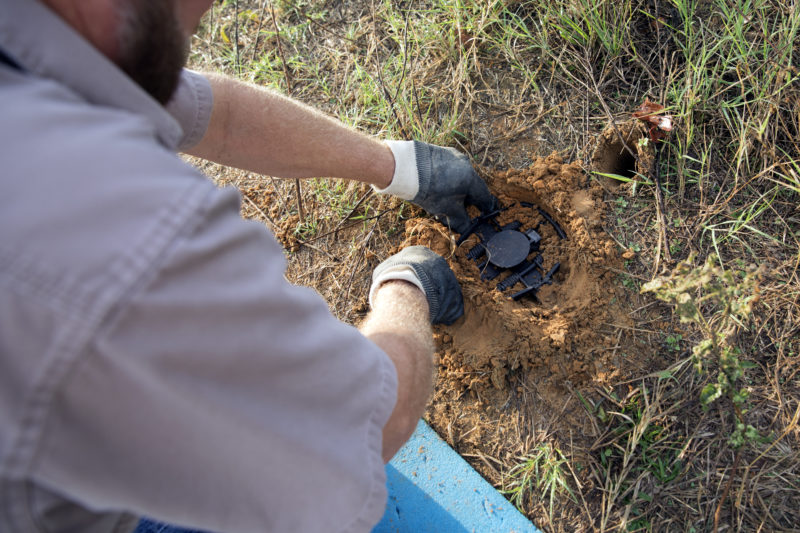
Hepker opens the spring-pressured jaws of the trap and places it in a hole, hoping a coyote will trigger it by stepping on the pan in the middle.
Hepker, 61, fell in love with trapping for its classic frontier appeal: man against nature, making a living fur by fur. In Texas, there are regulations against trapping fur-bearing animals for commercial use. But the state considers nuisance animals — predators that cause loss or damage to crops, livestock or personal property — fair game. Five years ago, he turned his lifelong hobby into a side business, Texas Wildlife Nuisance Control.
Hepker crouches and digs a 6-inch-diameter hole. A heavy rain begins to fall as he stakes and buries the chain that anchors the trap. He opens the coil-spring jaws, covers the pan with a thin layer of dirt and drops a bit of gland lure in a hole about 6 inches from the trap. He squirts coyote urine from a plastic bottle onto the ground nearby.
Like most dogs, coyotes tend to sniff out any infringement on their territory. Hepker wants the coyote to trip the 2-inch-diameter pan while stepping forward to investigate the scent of the lures. Once triggered, the smooth metal jaws will spring shut, capturing the coyote by the foreleg until Hepker shows up with his .22.
As a final touch, he draws lines in the dirt away from the trap, imitating the kickback canines do after urinating, to spark further curiosity from his quarry. To catch a coyote, you must think like a coyote.
“One lifetime is not enough to learn it all,” says Jim Brooks, a retired trapper based in Menard, 150 miles west of Austin, who trapped coyotes for Wildlife Services. “To me, a coyote is probably the smartest predator out there. You’re out there on his home country. Out of all these thousand acres, you gotta cause that coyote to step on that little 2-inch trap pan. It is a challenge.”
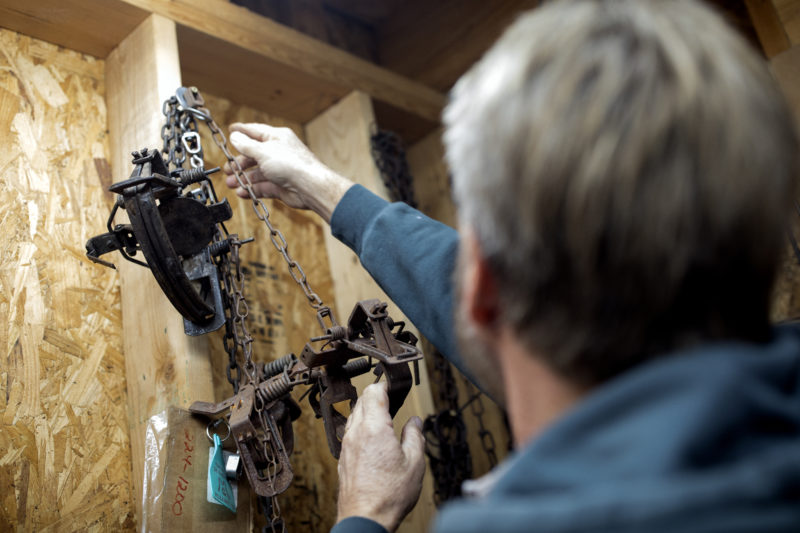
Hepker looks at his collection of new and antique traps that hang on the walls of his shed.
At 12, Hepker discovered an chain caught in the roots of an old-growth oak behind his parents’ house in western New York state. He dug out the rusted links and found a trap at the end, starting a lifelong obsession.
His first catch was a possum, which he learned to skin by reading a manual and through trial and error. He moved on to muskrats and minks, then rabbits and foxes.
He read “50 Years a Hunter and Trapper” by E.N. Woodcock. “I don’t know how many book reports I did on just that one book,” he says, thinking back on his school days. He began to emulate Woodcock, a mid-1800s homesteader who wandered and trapped in the same backwoods of New York and Pennsylvania.
Hepker was raised to earn his keep. As a teenager, he mowed lawns, fixed fences and worked long hours on dairy farms milking cows and bucking hay — throwing heavy bales onto a flatbed truck or a pile in the field. A year into his trapping hobby, he sold his first muskrat pelt to a burly bar owner and fur buyer, who eventually hired Hepker to work at his fur shed in Pennsylvania.
This days, Hepker gets only about $10 for coyote pelts. But back then, pelts could bring significant cash for a seasoned trapper. Hepker couldn’t find a mentor among old timers reluctant to train future competitors. So he used prey as his guide, developing his knowledge of set placement and lure combination by spending time outdoors and getting on his hands and knees to set traps whenever he could.
“That’s a part of trapping,” he says. “Learning and listening.”
Today, Hepker is going on his 35th year as the owner and manager of an office supply store on Main Street in downtown Bastrop. But first and foremost, he considers himself a trapper.
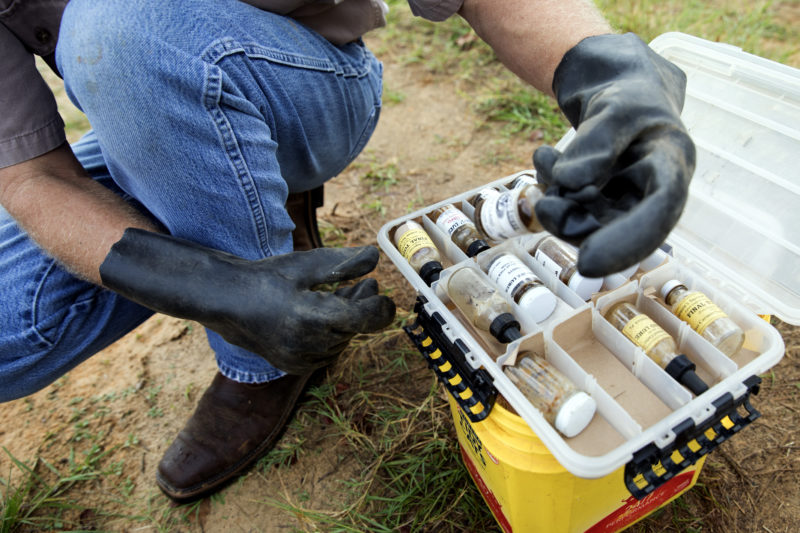
Hepker chooses lures, made from the glands or urine of coyotes, bobcats and foxes, to attract his quarry.
“They are a coyote to be reckoned with, here in Texas,” Hepker says.
Though smaller than eastern coyotes, Texas coyotes are tougher and smarter, Hepker claims, although that may be his adopted Texas pride talking.
In his 20s, Hepker followed a gut yearning to move to Texas, inspired by its promise of open plains and plenty of coyotes and bobcats to trap.
He met and married a schoolteacher named Cindi and eventually settled in Bastrop, at that time a small town separated from Austin by 30 miles of blackland prairie. He started a family and a small business, but he never stopped trapping.
In four decades, Bastrop’s population has more than doubled. The most recent Census estimate is about 8,500 residents.
“The way I see it,” Hepker says from the garage workshop on his property off Highway 21, “Bastrop is growing so fast, before you know it we’re gonna take over Austin.”
With that growth came considerable change, in the makeup of the town and the behavior of wildlife nearby. “They’re learning to live around us,” he says, “which is unfortunate for them at times, because it takes them out of their natural habitat, and then they start getting in trouble.”
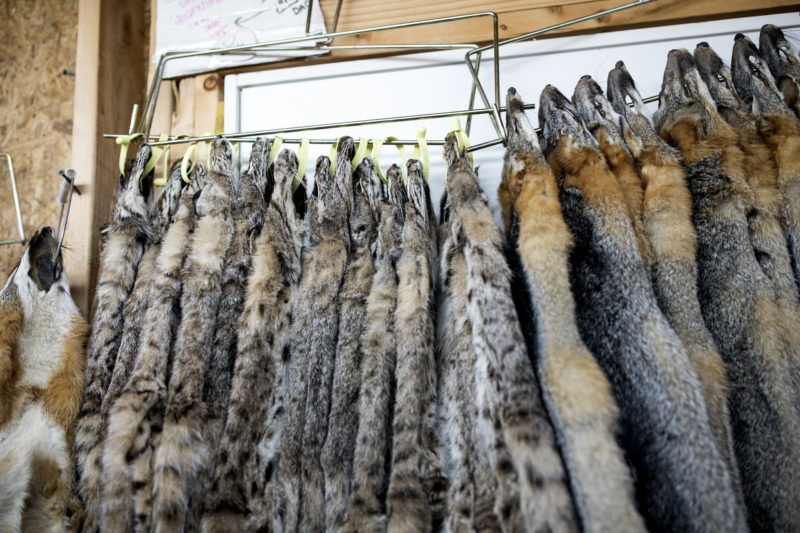
Hepker tans the pelts of animals he traps, but they don’t bring the same amount of money they once did.
Coyotes will eat just about anything. Like bobcats and gray foxes, they are extremely opportunistic and adaptable. Land that has been plotted and fenced by landowners, ranchers or developers is wild all the same, as long as there are easy food sources.
“I don’t know how many people call me up and say something like, ‘We used to love seeing this bobcat come through our yard, and then one day it came up and grabbed our cat,’ ” Hepker says. “You know, you’re out in the country. That’s the way nature works.”
Many of the suburban coyotes he has trapped appear bigger and healthier than coyotes farther from town. “I’ve noticed over the years that some of the biggest animals I’ve caught were in close proximities to trails going into subdivisions,” says Hepker, remembering a coyote he caught near a railroad track leading out of town; it weighed 50 pounds, well above average for a Texas coyote.
“Any wild animal, in my opinion, that loses fear of man can be a danger in the future,” he says. These “problem predators” — coyotes or bobcats that have adapted to living in close proximity to humans and their pets— give Hepker incentive to keep trapping.
Not that he needs reason to continue doing what he has done for 49 years. He recalls what Bill Applegate, a celebrated cougar trapper in West Texas, once wrote to him: “It’s not right for a trapper not to be trapping.”
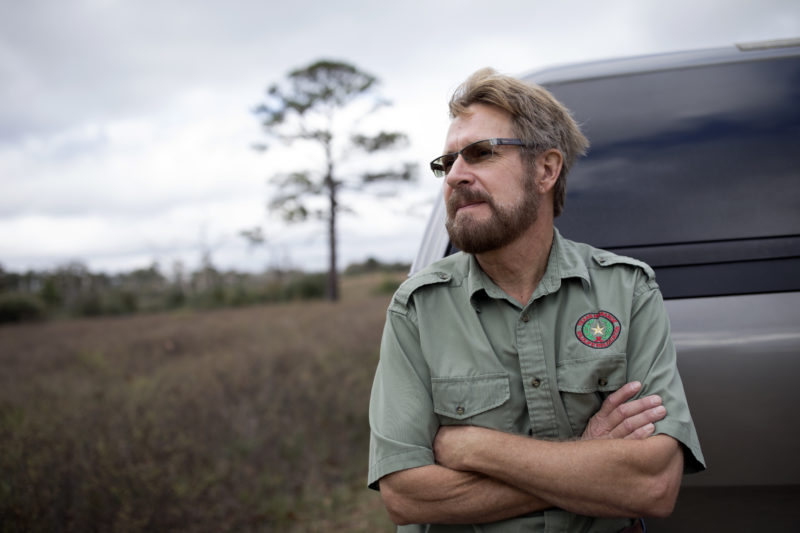
Hepker became a trapper because of his love for the outdoors. “It’s not always about the catching,” he says. “I could be in an office somewhere, but I’m out here, seeing what’s happening.”
“Once you got traps set, you got to keep checking those traps every day,” Hepker says. “Raining or freezing. You got traps out, you’re out there.”
He drives his truck through the ranch, retracing his path from the day before. He comes across his first pair of sets, looking for a trapped canine thrashing in the weeds.
Nothing. He fires the traps with his boot heel, digs up the stakes and moves on.
He comes up to his next set. Still, no catch. He finds hoof prints nearby from a feral hog, currently the most destructive predator in Texas. But no sign of his quarry.
“Well, this wasn’t my day,” says Hepker, after checking the last of his empty sets. But he corrects himself:
“You know, the thing with trapping, it’s not always about the catching. I could be in an office somewhere, but I’m out here, seeing what’s happening.”
A wind blows across the tall prairie grasses. A buck lurks nearby, undisturbed and unthreatened.
Setting traps takes precision and repetition. It takes learning the lay of the land, studying the mind and behavior of a predator and loving the chase that accompanies each catch.
“You gotta have respect for the animals you’re after,” says Hepker. “And sometimes you gotta be willing to let ‘em go.”